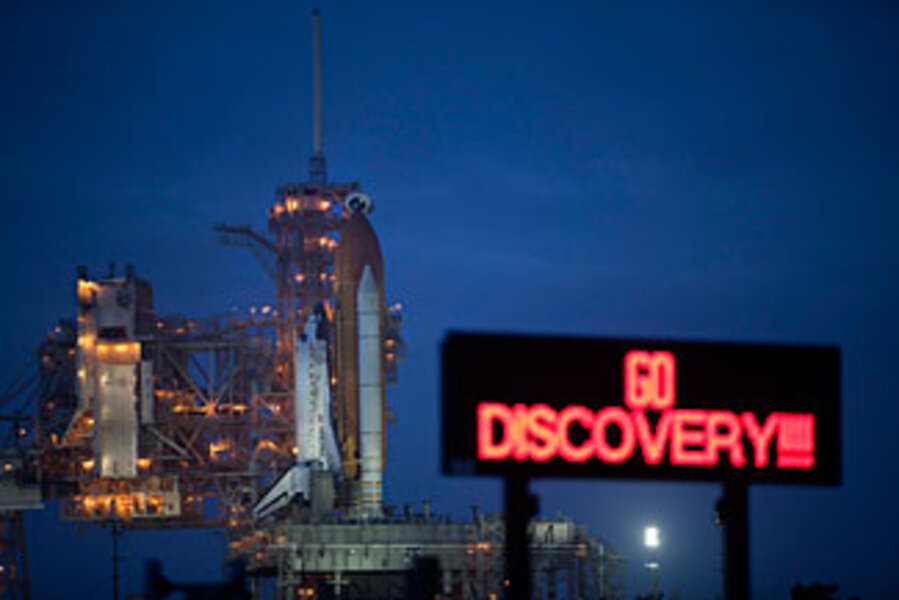After weather and valve glitch, shuttle Discovery set to launch
Loading...
After two delays over four days, the space shuttle Discovery and its seven-member crew are set for launch Friday night on a 13-day mission to the International Space Station.
The crew will deliver the treadmill named for comedian-satirist Stephen Colbert to the station, along with laboratory hardware, a new crew sleep station, and other supplies. Astronauts are scheduled to conduct three spacewalks for maintenance tasks. And the mission will return station crew member Timothy Kopra, leaving astronaut Nichole Stott on the station, as part of a regular crew rotation.
The launch, scheduled for 11:59 Eastern Daylight Time, originally was to have taken place early Tuesday morning, but at the last minute bad weather forced launch director Peter Nickolenko to scrub the attempt.
The team aimed for a Wednesday morning launch. But that attempt was canceled when controllers couldn't tell if a critical valve had closed, as it was supposed to do, as the fueling process ended.
The valve controls the flow of fuel when the shuttle's main tank is being loaded or emptied. Flight rules dictate that when sensors fail to signal the valve's status, controllers can't test the valve directly by opening and closing it with a full load of super cold fuel in the tank. If the valve is balking because it's gunked up with debris from wear and tear, it could get stuck in the wrong position.
Instead, the shuttle's external fuel tank must be emptied. And temperatures and pressures in the valve's surrounding plumbing must be at ambient levels before controllers can try to open and close the valve several times to make sure it works.
So technicians emptied the tank and controllers ran the test. The valve passed. So did the indicator that failed to signal the valve's status when the tank was full. The team ran a second, indirect test to make sure the valve had closed. The valve passed that one, too.
But that gave some engineers pause, acknowledges Mike Moses, who heads the mission management team.
Some thought "we should be no-go," he said during a prelaunch briefing Thursday afternoon. The reason: If the fuel tank is refilled and the sensor fails again, no one knows if the valve has shut.
Team members have come up with several indirect ways to verify the valve's status – measurements they can compare with the valve's performance on previous flights. If these then-and-now measurements match up, this would give the launch team a high level of confidence that the valve is behaving properly, Mr. Moses says.
In addition, the analysis of this valve brought to light results of past tests in which cruddy valves worked through at least 200 open-shut cycles, although they made some unsettling noises as they opened and closed.
Taking all these tests into account, "we've come to understand the problem, and we can now relax that rule," Moses says, and revert to an earlier version that allowed controllers to directly test the valve, even though the fuel tank is full.
To some, the move triggers memories of a criticism investigators into the 1986 Challenger disaster leveled at NASA – its increasing willingness to grant waivers to flight-readiness requirements in order to keep launches on schedule.
But Moses notes that while mission managers are likely to revert to the old rule, "we're probably going to make it a little stricter." He explains that the valve would have to pass the secondary tests and the preflight screening in order to give controllers confidence that, in the absence of a direct indication of the valve's status, they can verify it by opening and shutting the valve with a full load of fuel in the external tank.
-----
Follow us on Twitter.





